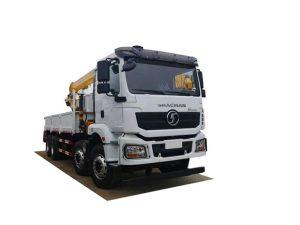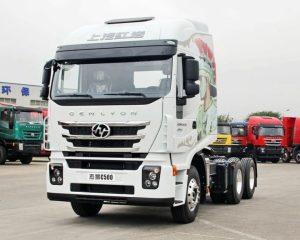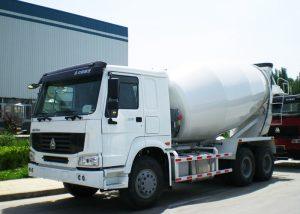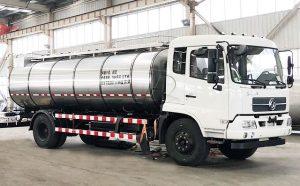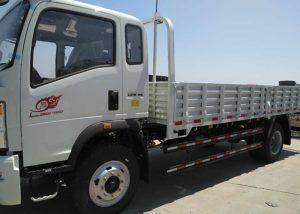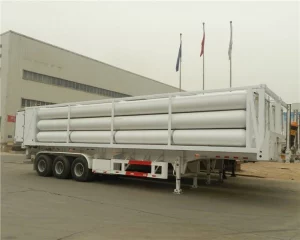Monday to Saturday - 8:00 -17:30
How Trash Trucks Work: A Comprehensive Guide
Trash trucks are an essential component of municipal waste management systems. They play a vital role in keeping our communities clean and healthy by collecting and transporting waste correctly. In this article, we will explore the inner workings of trash trucks, their various types, mechanisms, and operational procedures, as well as tips for effectively managing waste in our communities.
Understanding the Basics of Trash Trucks
To comprehend how trash trucks work, it’s important to first understand their purpose. Trash trucks, also known as garbage trucks or refuse collection vehicles, are designed to collect waste from residential and commercial areas before transporting it to disposal sites.
The Essential Components of Trash Trucks
| Component | Description |
|---|---|
| Chassis | The foundational structure that supports the truck’s body and components. |
| Compaction System | A mechanism that compresses the collected waste to maximize space. |
| Loading Mechanism | Either a manual or automated system for loading trash into the truck. |
| Container | The area where waste is stored during transport. |
| Discharge Mechanism | A system that allows for the unloading of the waste at disposal sites. |
Types of Trash Trucks
There are several types of trash trucks, each designed for different collecting and transporting needs. Here’s a breakdown of the most common types:
1. Rear-Loader Trash Trucks
These trucks have a loading mechanism at the back and are typically used for residential waste collection. Workers usually load waste into the rear while the truck is stationary.
2. Front-Loader Trash Trucks
Equipped with hydraulic arms, these trucks lift and empty large containers from the front. They are commonly used for commercial waste collection.
3. Side-Loader Trash Trucks
These trucks allow for automated pickup from the side, making them efficient for both residential and commercial collection. They reduce the need for workers to manually load trash.
4. Specialized Trucks
Some trucks are designed for specific types of waste, such as recycling trucks that separate materials or hazardous waste vehicles that safely collect dangerous items.
How Trash Trucks Operate
The operation of a trash truck involves multiple steps, from collection to transport. Below, we will examine the entire process.
The Collection Process
Ownership of trash trucks varies. Some municipalities own their fleets, and others contract with private companies. Regardless of ownership, the collection phase involves:
- Scheduling routes to maximize efficiency.
- Using GPS systems to navigate and track collection points.
- Employing workers or automated systems for loading waste.
The Compaction Mechanism
Once collected, the trash is compacted to minimize space and optimize transportation. This process is critical for:
- Increasing payload capacity.
- Reducing the number of trips to disposal sites.
- Minimizing costs associated with fuel and labor.
Transporting Waste
After compaction, the truck heads to a landfill, waste-to-energy facility, or recycling center. The journey must be planned to ensure:
- Minimized road damage, particularly in residential areas.
- Compliance with local transportation regulations.
- Maximized efficiency in dispatching loads for waste management.
Unloading Waste
Upon arrival at disposal sites, unloading mechanisms vary depending on the type of trash truck:
- Rear-loaders simply tilt back to drop off trash.
- Front-loaders use hydraulic arms to empty containers.
- Side-loaders use tipping systems to quickly offload waste.
Waste Management Best Practices
Effective waste management not only eases the burden on trash trucks but also promotes sustainability. Here are tips for improving waste management:
Reduce, Reuse, Recycle
Be conscious of your consumption. Reduce waste production, reuse items when possible, and recycle materials like paper, glass, and plastics.
Organize Your Waste
Separate waste into categories, making it easier for trash trucks to handle. This includes compost, recyclables, and landfill-bound materials.
Participate in Local Programs
Many municipalities offer special collection days for bulky items or hazardous waste. Stay informed and participate to contribute to proper waste disposal.
The Impact of Technology on Trash Trucks
Advancements in technology have revolutionized the waste collection process. Here are a few examples:
Automated Loading Systems
As mentioned, automated side-loaders enhance efficiency and safety, reducing the need for manual lifting and decreasing the risk of accidents among workers.
Advanced Route Management
GPS and routing software enable trash trucks to operate more efficiently by determining optimal routes, reducing overall fuel consumption, and ensuring timely collections.
Eco-Friendly Innovations
Electric trash trucks are emerging as a greener alternative to traditional diesel-fueled vehicles. They produce fewer emissions and contribute to cleaner urban air quality.
Challenges Facing Trash Collection Services
Despite their vital role, trash trucks and collection services face several challenges:
Budget Constraints
Municipal budgets can limit the ability to purchase necessary equipment or improve services. This can lead to increased waste accumulation and neighborhood blight.
Public Education
There is often a lack of public understanding about proper waste disposal practices. Effective education campaigns can improve community engagement.
Environmental Regulations
Stricter environmental laws require waste management companies to adapt and conform, sometimes necessitating costly adjustments to their operations.
Future Trends in Waste Collection
Looking ahead, the waste collection industry will likely see several trends:
Increased Automation
Automation will continue to play a significant role in waste collection, making services faster and safer.
Smart Waste Management Systems
Technology will enable the development of smart bins that can signal when they are full, optimizing collection routes and times.
Sustainability Initiatives
As global awareness of environmental issues rises, more companies will shift towards sustainable practices, including organic waste collection and composting programs.
Frequently Asked Questions
1. How often do trash trucks collect waste?
Most residential areas have garbage collection once a week, while commercial areas may have daily pickups.
2. What should I do if my trash is not collected?
Contact your local waste management service to report the issue, as it could be due to a missed pickup or scheduling changes.
3. Are all trash trucks the same?
No, there are different types of trash trucks designed for specific collections, like rear-loaders for residential areas and front-loaders for commercial businesses.
4. Can I recycle food waste with my regular trash?
No, food waste should typically be placed in a separate compost bin or disposed of in accordance with your local waste management guidelines.
5. How do electric trash trucks work?
Electric trash trucks use rechargeable batteries and electric motors for operation, reducing greenhouse gas emissions compared to traditional diesel trucks.
6. What happens to the trash after it’s collected?
After collection, trash is transported to landfills, waste-to-energy facilities, or recycling centers for processing and disposal.


